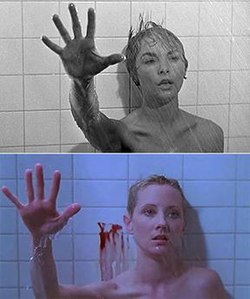
Psycho is a 1960 American horror film produced and directed by Alfred Hitchcock. The screenplay, written by Joseph Stefano, was based on the 1959 novel of the same name by Robert Bloch. The film stars Anthony Perkins, Janet Leigh, Vera Miles, John Gavin and Martin Balsam. The plot centers on an encounter between on-the-run embezzler Marion Crane (Leigh) and shy motel proprietor Norman Bates (Perkins) and its aftermath, in which a private investigator (Balsam), Marion's lover Sam Loomis (Gavin), and her sister Lila (Miles) investigate her disappearance.
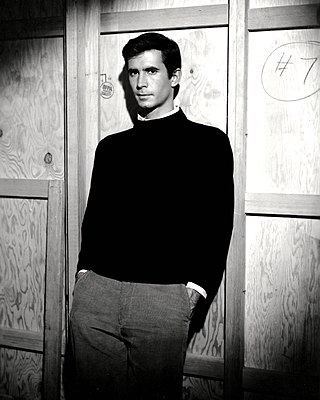
Norman Bates is a fictional character created by American author Robert Bloch as the main protagonist in his 1959 horror novel Psycho. He has an alter, Mother, who takes from the form of his abusive mother, and later victim, Norma, who in his daily life runs the Bates Motel.

Vera June Miles is an American retired actress, best known for roles in the John Ford directed, John Wayne starring Westerns The Searchers (1956) and The Man Who Shot Liberty Valance (1962) as well as for playing Lila Crane in the Alfred Hitchcock film Psycho, later reprising the role in its sequel, Psycho II.
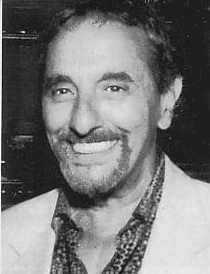
Joseph William Stefano was an American screenwriter, known for adapting Robert Bloch's novel as the script for Alfred Hitchcock's film Psycho, and for being the producer and co-writer of the original The Outer Limits television series.
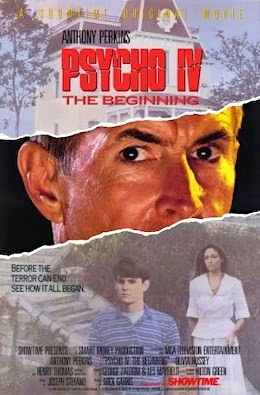
Psycho IV: The Beginning is a 1990 American made-for-television slasher film directed by Mick Garris, and starring Anthony Perkins, Henry Thomas, Olivia Hussey, Warren Frost, Donna Mitchell, and CCH Pounder. It serves as both the third sequel and a prequel to Alfred Hitchcock's Psycho, focusing on the early life of Norman Bates and the flashbacks that took place prior to the events of the original film. It is the fourth and final film in the original Psycho franchise, and Perkins' final appearance in the series before his death in 1992.
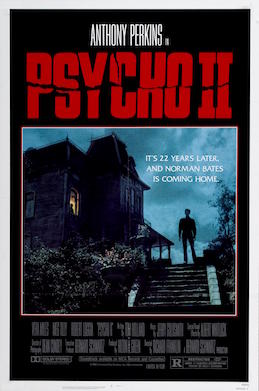
Psycho II is a 1983 American psychological slasher film directed by Richard Franklin, written by Tom Holland, and starring Anthony Perkins, Vera Miles, Robert Loggia, and Meg Tilly. It is the first sequel to Alfred Hitchcock's 1960 film Psycho and the second film in the Psycho franchise. Set 22 years after the first film, it follows Norman Bates after he is released from the mental institution and returns to the house and Bates Motel to continue a normal life. However, his troubled past continues to haunt him as someone begins to murder the people around him. The film is unrelated to the 1982 novel Psycho II by Robert Bloch, which he wrote as a sequel to his original 1959 novel Psycho.

Psycho III is a 1986 American slasher film, and the third film in the Psycho franchise. It stars Anthony Perkins, who also directs the film, reprising the role of Norman Bates. It co-stars Diana Scarwid, Jeff Fahey, and Roberta Maxwell. The screenplay is written by Charles Edward Pogue. The original electronic music score is composed and performed by Carter Burwell in one of his earliest projects. Psycho III is unrelated to Robert Bloch's third Psycho novel, Psycho House, which was released in 1990.

Psycho is an American horror franchise consisting of six films loosely based on the Psycho novels by Robert Bloch: Psycho, Psycho II, Psycho III, Bates Motel, Psycho IV: The Beginning, the 1998 remake of the original film, and additional merchandise spanning various media. The first film, Psycho, was directed by filmmaker Alfred Hitchcock. Subsequently, another film related to the series was made: an Alfred Hitchcock biopic, and two new novels, by Takekuni Kitayama and Chet Williamson, were released. Also, an independent documentary called The Psycho Legacy was released on October 19, 2010, mostly focusing on Psycho II, Psycho III and Psycho IV: The Beginning, while covering the impact and legacy of the original film.

Psycho is a 1959 novel by American writer Robert Bloch. The novel tells the story of Norman Bates, a caretaker at an isolated motel who struggles under his domineering mother and becomes embroiled in a series of murders. The novel is considered Bloch's most enduring work and one of the most influential horror novels of the 20th century.
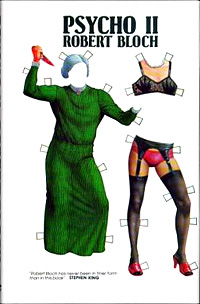
Psycho II is a 1982 novel by American writer Robert Bloch. It is a sequel to his 1959 novel Psycho. The novel was completed before the screenplay was written for the unrelated 1983 film Psycho II. According to Bloch, Universal Studios loathed the novel, which was intended to critique Hollywood splatter films. A different story was created for the film and Bloch was not invited to any screenings. Universal suggested that Bloch abandon his novel, which he declined and released anyway to good sales.
Alfred Hitchcock's films show an interesting tendency towards recurring themes and plot devices throughout his life as a director.

Norma Bates is a fictional character created by American author Robert Bloch in his 1959 thriller novel Psycho. She is the deceased mother and victim of serial killer Norman Bates, who had recreated her in his mind as a murderous alternate personality.

Marion Crane, also under the alias Marie Samuels, is a fictional character created by American author Robert Bloch in his 1959 thriller novel Psycho. She is portrayed by Janet Leigh in the 1960 version of Psycho directed by Alfred Hitchcock, by Anne Heche in the 1998 version of Psycho, and by Rihanna in the television series, Bates Motel (2017). For her performance in Psycho, Leigh was nominated for Best Supporting Actress in the Academy Awards and won a Golden Globe Award in the same category.
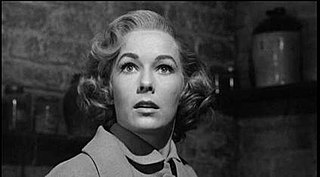
Lila Loomis is a fictional character created by American author Robert Bloch in his 1959 thriller novel Psycho; she is the sister of Norman Bates's victim Marion Crane. She is revealed as the real protagonist of the novel in the final chapters, after several false protagonists, including her sister, who gets murdered. Lila is portrayed by Vera Miles in the 1960 film version and by Julianne Moore in the 1998 version. Additionally, Lila appears in Bloch's 1982 sequel novel Psycho II, and the unrelated 1983 sequel film of the same name, in which she serves as an antagonist.
Marli Renfro is an American former showgirl, model, Playboy cover girl and actress.

The Psycho Legacy is a 2010 American independent direct-to-video documentary film that examines the history of the Psycho film franchise and the continuing legacy of the original Psycho. It also pays a tribute to actor Anthony Perkins for his portrayal of character Norman Bates. It is written and directed by Robert Galluzzo. It includes interviews with the cast and crew who were involved in the productions of Psycho, Psycho II, Psycho III and Psycho IV: The Beginning. It also features interviews with current horror filmmakers who are fans of the Psycho series.
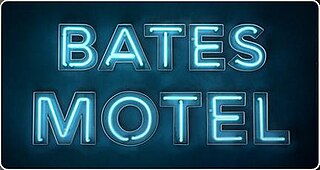
Bates Motel is an American psychological horror drama television series based on characters from the 1959 novel Psycho by Robert Bloch that aired from March 18, 2013, to April 24, 2017. It was developed by Carlton Cuse, Kerry Ehrin, and Anthony Cipriano for the cable network A&E.
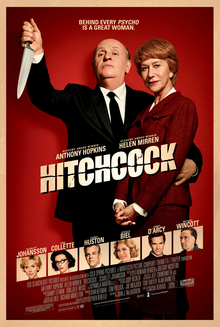
Hitchcock is a 2012 American biographical romantic drama film directed by Sacha Gervasi and based on Stephen Rebello's 1990 non-fiction book Alfred Hitchcock and the Making of Psycho. Hitchcock tells the story of the relationship between Alfred Hitchcock and his wife, Alma Reville, during the filming of Psycho in 1959. Hitchcock premiered at the AFI Fest on November 1, 2012 and was released in the United States on November 23 by Fox Searchlight Pictures. It grossed $27 million against a $15 million budget.
Alfred Hitchcock: The Art of Making Movies was a part-3-D film, part-live action show at Universal Studios Florida, and one of the theme park's original attractions. Directed by Susan Lustig and sponsored by Kodak, the attraction commemorated Alfred Hitchcock's 43-year association with Universal Studios. It featured attacks from birds similar to Hitchcock's film The Birds in the pre-show area, and featured the famous shower scene from Psycho in the main show with narration by Anthony Perkins, who played Norman Bates in the latter film. It closed on January 3, 2003, and was replaced by Shrek 4-D later that year.
James P. Cavanagh was an American television writer. He wrote numerous episodes for Alfred Hitchcock Presents and won a Primetime Emmy in 1957 for his teleplay Fog Closing In. Cavanagh wrote the first script for the 1960 film Psycho. Though the script was rejected by Hitchcock it contained many similarities with the final version, written by Joseph Stefano.

